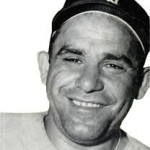 I see writing as the stringing together of a series of scenes in which characters develop, actions develop and finally stories develop. When I have a very rough picture of what the scene is, I physically transport myself to the center of the scene, stand there and do a slow three-sixty and take in as much as I can.
I see writing as the stringing together of a series of scenes in which characters develop, actions develop and finally stories develop. When I have a very rough picture of what the scene is, I physically transport myself to the center of the scene, stand there and do a slow three-sixty and take in as much as I can.
I don’t always see everything in that first three-sixty, so I stop as often as I need, and take as many three-sixtys as I need to get the entire picture. Example: My character is a smart eight year old girl, from a wealthy family, with a strong background in ballet. She has been kidnapped but has found a way to escape. It’s four thirty in the morning, dark, and she is on the second floor of a three story walk-up in Bedford-Stuyvesant, New York. She escapes her captor, runs out the apartment door and finds herself at the top of a stairway which begins the path of her escape, a path neither she nor I have seen before.
What do the stairs look like? I see dingy walls and stairs, poorly lighted, narrow, I don’t have a lot of time to look, she’s running. She is sure footed, a ballet dancer, and nimbly descends. She realizes that she may have to tell police where she had been, so she looks up and sees the street number, backwards, painted on the transom above the door. 08632 etches into her memory. She throws open the door and runs down the ten, brownstone steps to the sidewalk.
Once on the sidewalk she stops, does a one-eighty, trying to decide which direction to run. Other than street lights and traffic lights, she sees a single store front light four blocks away. She runs toward the light she thinks might help her. “Where am I?” She asks herself. As she crosses the first intersection, she looks up and sees that she is on Madison Street.
Now all she can think of is running as fast as she can and the light, now three blocks away. She concentrates only on the light and the sidewalk beneath her feet. As she nears the light she can make out a sign which is printed in a strange language. When she arrives she sees it is an Asian, mom- and-pop grocery store, a little man inside preparing for the day.
That was my first run through the scene. Whats missing? Other people? Probably not many if any at four thirty in the morning. Trees? Garbage Cans? Passing cars? Not important. I think, however, I’m going to have her deftly, ballet leap over a bum sprawled on the sidewalk near her destination. I love writing.
 Yesterday we lost Yogi Berra. I have never been a real big baseball fan, but I have always been a Yogi fan. Each week I have tried to close the week with a Yogiism to lighten the weekend just a bit. “It’s amazing how much you can observe by just watching,” or “It aint over til it’s over,” or “When you come to a fork in the road, take it,” or the all-timer, “Always go to other peoples funerals, otherwise they won’t come to yours.”
Yesterday we lost Yogi Berra. I have never been a real big baseball fan, but I have always been a Yogi fan. Each week I have tried to close the week with a Yogiism to lighten the weekend just a bit. “It’s amazing how much you can observe by just watching,” or “It aint over til it’s over,” or “When you come to a fork in the road, take it,” or the all-timer, “Always go to other peoples funerals, otherwise they won’t come to yours.”